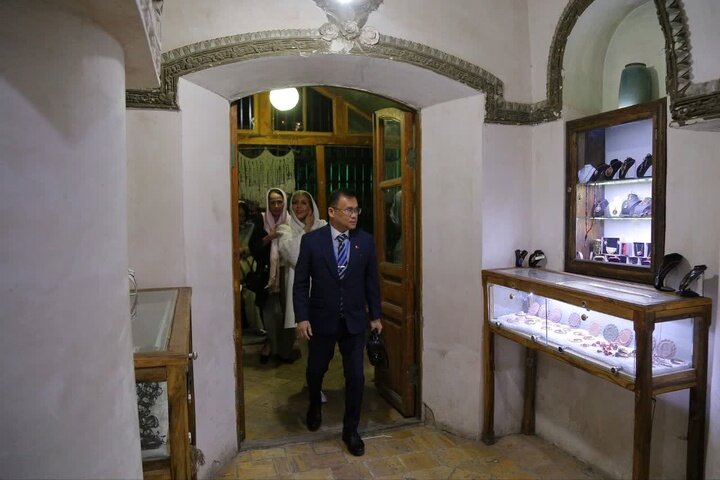Qazvin wins ambassadors’ hearts

TEHRAN – Ambassadors from South Korea, New Zealand, the Philippines, and Nicaragua have recently explored a selection of destinations during their two-day tour to Iran’s Qazvin.
The envoys toured Sa'd al-Saltaneh Caravanserai, the Anthropology Museum of Qajar Bath, Kantur Church, the Alamut fortress, and the tourist village of Aloulak in a program aimed at enriching their understanding of the city’s cultural heritage.
Michael Wehi Mailetonga Walsh, representing New Zealand, expressed his enthusiasm, noting that we would share Qazvin’s beauty with the other ambassadors “who couldn’t make it to join us on this trip”.
He further praised Qazvin for its renowned hospitality and historical architecture, stating that despite the great distance between the two countries, Iranians are known for their warm hospitality and friendly demeanor in New Zealand.
“I will promote the beauty of Qazvin among other diplomats,” Kim Junpyo, the South Korean ambassador noted. “And to my fellow Koreans.”
The ambassador further mentioned that this was his first trip outside Tehran since his appointment, which makes the trip unforgettable.
Qazvin is famous for its rich history, and I am proud to be here, he added.
The ambassadors also participated in the opening ceremony of a rural and tribal festival in Qazvin, aimed at showcasing the region's rural and nomadic capabilities in celebration of an ancient local festival, “Panjah be dar,” which is a custom to celebrate day 50th of spring and showing the gratitude to the mighty God for the blessings such as rain.
The province boasts 1,516 nationally registered natural and historical sites, positioning it as an attractive destination for cultural and historical tourism.
Home to 845 inhabited villages, the Qazvin region was once the capital of the mighty Persian Empire, under the Safavids, from 1548 to 98. Moreover, the province is a major tourist destination with a wonderfully restored caravanserai-turned-arts precinct, some quirky museums, and a handful of decent eating options. For most travelers, Qazvin is also primarily the staging point for excursions to the famous castle of the Assassins and hiking in the sensational Alamut Valley.
Also known as the castle of the Assassins, the 12th-century Alamut castle is nestled on top of a peak. It was once a shelter for the followers of Hasan-e Sabbah (1070–1124) who was a spiritual leader of an Islamic sect. In the early 1930s, British-Italian explorer and travel writer Freya Stark described her exploration of the place in her book “The Valleys of the Assassins.”
Qazvin is also home to one of the biggest roofed caravanserais in the country, Sa’d-al Saltaneh caravanserai. Dating back to the Qajar era, it’s a place for discovering tens of Hojreh shops, cafes, yards, and a stunning mosque. It’s a place for visitors who want to experience the culture, cuisine, and hospitality of Iran.
XF
